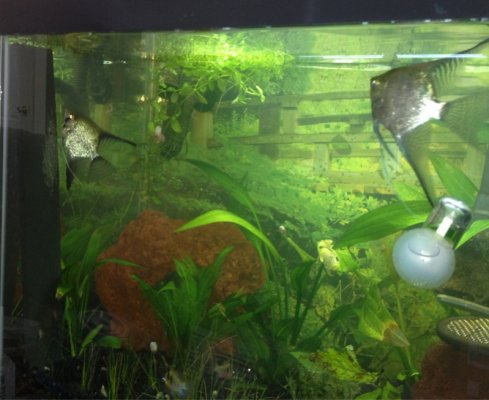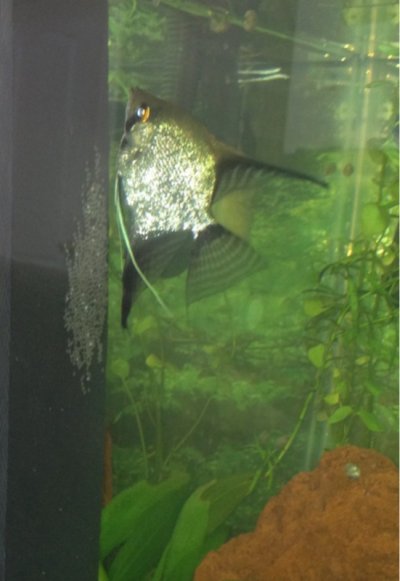Video Courtesy DaharkazAngel
MODE OF DISEASE TRANSFER
This is where there is not clear evidence (scientific that is), all I have is my observations as well as speaking with other aquarium maintenance professionals experience and brief non-scientific articles about Angelfish Virus. I will provide a few observations/theories (please note that these are not proven at the time of writing this article):
*Direct transfer in the water column; this seems to be the main mode of transference, which of coarse quarantine or purchasing of fish from a known good source can help prevent. As well I have noted that UV Sterilization has helped check the spread of Angelfish Aids to non-immune/exposed fish (which further supports this theory as a UV cannot prevent the spread via feces or similar)
*Transfer via infected water, decorations, or even plants; this is similar to the above and similar preventative measures as above should be taken to prevent this mode of transfer
*Transfer via direct contact/feces; I personally do not support this mode of transfer as I have not observed it nor has the few tests to check the spread bear this out, however a few knowledgeable persons I know (or read) have postulated this.
*Incubation of the virus; as noted in the symptoms section of this article, it has been espoused that a fish can be a carrier for up to six months.
TREATMENT:
Since immunity is the objective, it is important to keep the angelfish comfortable while giving the immune system time to fight this virus (if it can). Part of the problem is this virus moves so fast, the fish’ immune system cannot respond quick enough, so optimal conditions is a must (and this includes the little known among aquarists parameter of Redox Balance which may be quite important for immunity during times of viral infection)
Secondary bacterial and Fungal/Saprolegnia infections are also often issues during Angelfish Aids infections from my experience.
Steps:
*Removal of any bright lights from the aquarium (a darkened quarantine tank with a seasoned Sponge Filter is strongly recommended).
*A medicated Bath utilizing Methylene Blue is recommended.
*Treatment (again preferable in quarantine for Angelfish Virus), may include a “cocktail” of SeaChem ParaGuard, Nitrofurazone, and Kanamycin
*Treat as the medications suggest until symptoms are gone plus 3 days
*Partial water changes between each treatment along with strict monitoring of water parameters (ammonia, nitrites, even GH & KH) is a must.
*The addition of a UV Sterilizer to the main display tank while the fish are in quarantined is strongly urged to aid in stopping the water borne spread of the virus and improve Redox Balance.
Also once added, maintenance of the UV Sterilizer is a must by changing the UV Bulb once every six months!
SUMMARY:
Although I have given a method of treatment, please do not let me give the reader too much false hope; as even with strictly following this treatment regimen quite strictly, chances of success are less than 50% from my experience (many aquarists choose to put the fish down rather than to treat and this is a valid option in my humble opinion as well). However I have also had success with this treatment regimen (much more so than doing nothing), so if you are willing or able to strictly follow it, you may have success.
Either way, with success, failure, or putting the fish down; prevention of spread to other angelfish (or some other fish as well) should be considered. Multiple water changes, optimum water parameters, UV Sterilization, and holding off from adding other angelfish for 3-6 months should all be considered.






